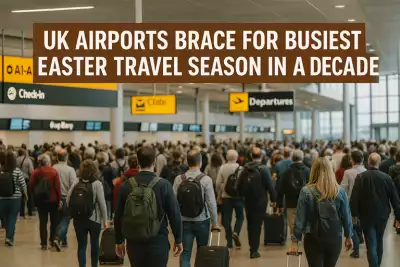Technical Issue Resolved in UK's Air Traffic Control System: Hundreds of Flights Delayed, Many to Operate with Delays
Technical Issue Resolved in UK's Air Traffic Control System: Hundreds of Flights Delayed, Many to Operate with Delays
In the realm of air travel, the efficiency and reliability of air traffic control systems play a critical role in ensuring the smooth operation of flights. However, recently in the United Kingdom, a technical glitch in the Air Traffic Control System led to the disruption of numerous flights, causing hundreds of departures to be postponed and arrivals to face delays.
The National Air Traffic Services (NATS), responsible for the management of UK airspace, swiftly addressed the situation and confirmed that the technical issue had been successfully resolved. While acknowledging the inconvenience caused to both passengers and airlines, NATS assured that efforts were underway to restore normal air traffic operations as quickly as possible.
Transport Secretary Mark Harper took to Twitter to address the situation, advising all passengers to stay in contact with their respective airlines for flight updates.
According to data from aviation analytics firm Cirium, a staggering total of 232 departures from the UK and 271 arrivals into the UK were unable to proceed due to the technical malfunction.
It's important to note that the aforementioned figures only account for flights that were outright canceled. Additionally, Cirium emphasized that, as a consequence of delays exceeding eight hours, certain flights might inevitably transition from delays to cancellations.
The incident sheds light on the intricate web of technology and coordination that sustains modern air travel. While advancements in aviation have undoubtedly streamlined the travel experience, the occurrence also underscores the fragility of such a system. The swift response from the relevant authorities in addressing the technical hiccup reflects the dedication to passenger safety and the overall efficiency of air travel.
As travelers and airlines navigate these challenges, the incident serves as a reminder that even in the age of innovation, disruptions can occur. Thus, maintaining open channels of communication with airlines and staying informed about flight status remains paramount for passengers as they embark on their journeys.
Featured


Explore the World with Ease: Caria Holidays Launches New B2C Flights, Hotels & Holiday Packages Platform
Details
UK Airports Brace for Busiest Easter Travel Season in a Decade
Details
Record-Breaking Year: UK Sees Surge in International Visitors Post-Brexit
Details
British Tourists Flock to Offbeat Turkish Destinations in 2025
Details
UK Expands Electronic Travel Authorisation (ETA) Scheme: EEA and Swiss Nationals Required to Apply from April 2, 2025
Details
Caria Holidays: Listed Among Europe’s Fastest Growing Companies 2025!
Details

